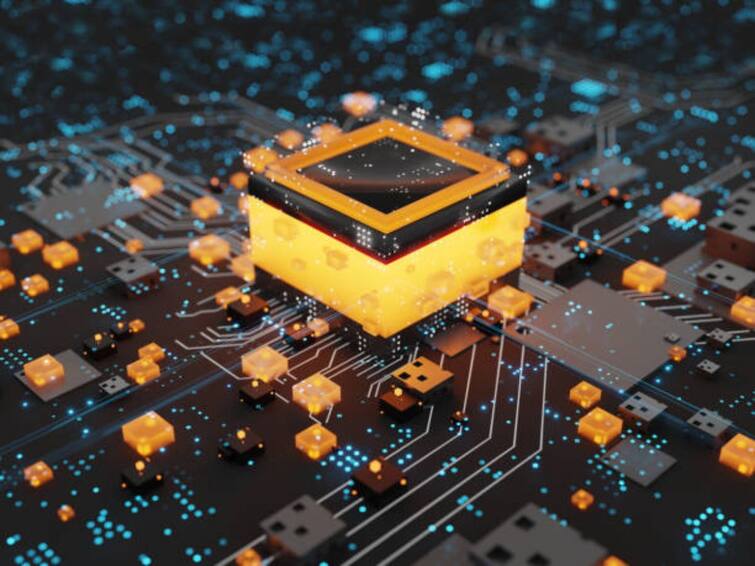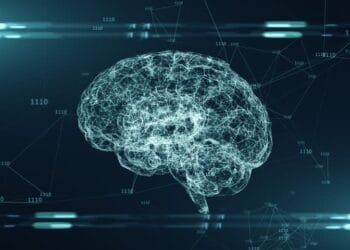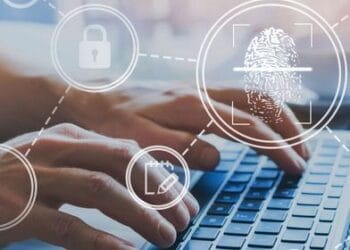In the landscape of technological innovation, few frontiers are as exhilarating and profoundly transformative as Quantum Computing. Far from the classical bits that power today’s computers, quantum machines harness the perplexing phenomena of quantum mechanics to tackle problems currently beyond the reach of even the most powerful supercomputers. This isn’t merely a faster computer; it’s a fundamentally different way of processing information, poised to unlock breakthroughs in medicine, materials science, cryptography, and artificial intelligence. This comprehensive article delves into the core principles of quantum computing, exploring its foundational concepts, the diverse technologies driving its development, its revolutionary potential across various sectors, and the significant challenges and immense opportunities that accompany this groundbreaking scientific and engineering endeavor.
What is Quantum Computing?

At its essence, quantum computing is a new type of computing that leverages the principles of quantum mechanics – the physics that describes nature at the scale of atoms and subatomic particles – to perform calculations. Unlike classical computers, which store information as bits (representing either a 0 or a 1), quantum computers use qubits.
The true power of quantum computing stems from two peculiar quantum phenomena:
- Superposition: A qubit can exist in a state of 0, 1, or simultaneously both 0 and 1. This means a single qubit can hold more information than a classical bit. For N qubits, the system can represent 2N states simultaneously. This exponential increase in information processing capability is what gives quantum computers their immense potential.
- Entanglement: Two or more qubits can become “entangled,” meaning they are linked in such a way that the state of one instantly influences the state of the other, regardless of the distance between them. This allows for complex correlations between qubits, enabling parallel processing of vast amounts of information simultaneously.
These properties allow quantum computers to explore multiple possibilities at once, making them uniquely suited to solve problems that are intractable for classical computers, such as simulating molecular interactions, optimizing complex logistics, or breaking certain types of encryption.
A. Foundational Concepts and Components of a Quantum Computer
Building and operating a quantum computer involves mastering incredibly delicate quantum states and requires specialized hardware and software.
- Qubits (Quantum Bits): The basic unit of quantum information. Unlike classical bits, which are either 0 or 1, qubits can exist in a superposition of both states simultaneously. Physical realizations of qubits include:
- Superconducting Qubits: Tiny circuits cooled to near absolute zero (millikelvin temperatures) to eliminate electrical resistance and maintain quantum coherence. This is the technology used by Google (Sycamore) and IBM (Eagle, Condor).
- Trapped Ions: Individual ions (charged atoms) suspended in electromagnetic fields and manipulated with lasers. Used by companies like IonQ.
- Topological Qubits: Hypothesized qubits based on exotic particles called anyons, designed to be more stable and less prone to decoherence. Microsoft is investing in this.
- Photonic Qubits: Qubits encoded in photons (particles of light), manipulated using optical components. Used by companies like PsiQuantum.
- Quantum Dots: Semiconductor nanostructures that confine electrons, allowing their spin or charge to act as qubits.
- Quantum Gates: Analogous to logic gates in classical computers, quantum gates are operations performed on qubits to manipulate their quantum states (superposition and entanglement). These gates are reversible and operate on complex numbers, unlike classical gates. Examples include Hadamard gates (for superposition) and CNOT gates (for entanglement).
- Quantum Algorithms: Specific sets of instructions designed to leverage superposition and entanglement to solve particular problems. Key algorithms include:
- Shor’s Algorithm: Can efficiently factor large numbers, posing a threat to current public-key encryption schemes (like RSA).
- Grover’s Algorithm: Can search unsorted databases much faster than classical algorithms.
- Quantum Approximate Optimization Algorithm (QAOA): Used for solving optimization problems.
- Variational Quantum Eigensolver (VQE): Used for simulating molecular energies.
- Quantum Coherence and Decoherence:
- Coherence: The ability of a qubit to maintain its quantum state (superposition and entanglement) without interference from the environment. Maintaining coherence for longer periods is crucial for running complex quantum algorithms.
- Decoherence: The loss of quantum properties due to interaction with the environment (e.g., heat, electromagnetic noise). This is a major challenge in building stable quantum computers.
- Error Correction: Qubits are inherently fragile and prone to errors (decoherence). Developing robust quantum error correction techniques is essential for building fault-tolerant quantum computers that can perform reliable, large-scale computations. This often requires many physical qubits to create one stable logical qubit.
- Cryostats and Vacuum Chambers: Many qubit technologies (especially superconducting qubits and trapped ions) require extremely cold temperatures (colder than deep space) and ultra-high vacuum environments to isolate qubits from environmental interference and maintain their quantum states. These are complex engineering marvels.
- Control Systems: Sophisticated electronics, microwaves, and lasers are needed to precisely manipulate qubits, apply quantum gates, and measure their final states.
Quantum Computing’s Transformative Impact Across Industries
While still in its early stages of development, quantum computing holds the potential to revolutionize numerous sectors by solving problems currently intractable for classical computers.
A. Materials Science and Chemistry
Quantum computing is uniquely suited to simulate molecular interactions, leading to breakthroughs in designing new materials and drugs.
- Drug Discovery and Development: Simulating molecular structures and interactions at the quantum level can lead to the discovery of new drug candidates with specific properties, accelerating the development of treatments for complex diseases like Alzheimer’s, cancer, and HIV.
- New Material Design: Designing materials with novel properties (e.g., superconductors at room temperature, highly efficient catalysts, lighter and stronger alloys) by precisely simulating their quantum behavior. This could revolutionize industries from energy to aerospace.
- Catalyst Optimization: Discovering and optimizing catalysts for various chemical reactions, which could lead to more efficient industrial processes, reduced energy consumption, and less waste in chemical manufacturing.
- Battery Technology: Designing materials for more efficient and longer-lasting batteries, crucial for electric vehicles and renewable energy storage.
- Fertilizer Production: Optimizing the Haber-Bosch process (for ammonia production, key for fertilizers) which currently consumes a significant portion of global energy. Quantum insights could lead to more energy-efficient methods.
B. Cryptography and Cybersecurity
Quantum computing presents both a profound threat to current encryption standards and the potential to develop new, stronger security measures.
- Breaking Current Encryption (Post-Quantum Cryptography): Shor’s algorithm can theoretically break widely used public-key encryption standards like RSA and elliptic curve cryptography, which secure everything from online banking to classified communications. This is a significant concern for national security and data privacy.
- Developing Quantum-Safe Algorithms: Researchers are actively developing “post-quantum cryptography” (PQC) – new encryption algorithms designed to be resistant to attacks from future quantum computers, ensuring long-term data security.
- Quantum Key Distribution (QKD): A method using quantum mechanics to securely distribute cryptographic keys, offering theoretically unbreakable security for communication channels. This enables truly quantum-secured communication networks.
- Enhanced Cybersecurity Analytics: Quantum machine learning could potentially enhance threat detection, anomaly identification, and fraud detection by analyzing complex patterns in cybersecurity data more effectively.
C. Artificial Intelligence (AI) and Machine Learning (ML)
Quantum computing can significantly enhance the capabilities of AI and ML, leading to more powerful and efficient intelligent systems.
- Quantum Machine Learning (QML): Developing quantum algorithms that can process vast datasets and perform complex calculations much faster than classical ML, leading to breakthroughs in areas like pattern recognition, data classification, and optimization.
- Improved Optimization for AI Models: Training large AI models can be computationally intensive. Quantum computers could optimize the training process, leading to more efficient and powerful AI.
- Drug Discovery with AI: Combining quantum simulations with AI could accelerate the identification of drug targets and molecular compounds, further revolutionizing pharmaceuticals.
- Better Data Analysis: Quantum algorithms could uncover hidden patterns in large, complex datasets that are currently impossible to find with classical methods, leading to deeper insights in various fields.
- Enhanced Generative AI: Potentially enabling more sophisticated and realistic generative AI models for creating images, text, and other media.
D. Financial Modeling and Optimization
The financial industry can leverage quantum computing for complex simulations and optimization problems.
- Portfolio Optimization: Managing large investment portfolios to maximize returns while minimizing risk involves complex optimization. Quantum algorithms could find optimal solutions much faster, leading to better investment strategies.
- Fraud Detection: Identifying sophisticated financial fraud patterns by analyzing vast, complex datasets that are beyond classical computational capabilities.
- Risk Analysis and Simulation: Performing highly accurate and rapid simulations for financial risk assessment (e.g., Monte Carlo simulations for derivative pricing), providing deeper insights into market behavior and potential vulnerabilities.
- Arbitrage Opportunities: Identifying transient arbitrage opportunities in fast-moving markets by processing data and executing trades at unprecedented speeds.
- Credit Scoring: Developing more nuanced and accurate credit scoring models by analyzing a wider range of data points.
E. Logistics and Supply Chain Optimization
Quantum computing can solve complex optimization problems crucial for logistics and supply chain management.
- Route Optimization: Finding the most efficient routes for delivery networks (e.g., shipping, last-mile delivery, flight paths) for thousands of vehicles and destinations, leading to significant cost savings and reduced emissions. This is often framed as the “Traveling Salesman Problem.”
- Supply Chain Resiliency: Optimizing complex global supply chains to be more resilient to disruptions (e.g., natural disasters, geopolitical events) by rapidly simulating alternative scenarios and resource allocations.
- Inventory Management: Optimizing inventory levels across multiple warehouses and distribution centers to meet fluctuating demand while minimizing holding costs.
- Fleet Management: Dynamically optimizing the scheduling and dispatching of large fleets of vehicles for maximum efficiency.
F. Aerospace and Defense
Quantum computing’s capabilities are highly relevant for designing advanced systems and ensuring secure communications in defense.
- Aircraft and Material Design: Designing lighter, stronger, and more fuel-efficient aircraft materials by simulating their quantum properties.
- Secure Communications: Implementing quantum key distribution (QKD) for ultra-secure communications between military units or sensitive installations, making eavesdropping theoretically impossible.
- Satellite Optimization: Optimizing satellite constellations, communication networks, and mission planning for complex space operations.
- Advanced Sensing: Developing ultra-sensitive quantum sensors for navigation, gravimetry, and medical imaging.
Challenges and Considerations in Quantum Computing’s Advance

Despite its immense promise, the path to practical, fault-tolerant quantum computing is fraught with significant scientific, engineering, and ethical challenges that demand careful attention and massive investment.
A. Scientific and Engineering Hurdles
- Qubit Stability (Coherence Time): Maintaining the fragile quantum states of qubits for long enough to perform complex calculations is incredibly difficult. Qubits are highly susceptible to “decoherence” from environmental noise.
- Error Rates: Current quantum computers have high error rates. Developing robust quantum error correction methods, which require many physical qubits to create one reliable logical qubit, is a major challenge.
- Scalability: Building quantum computers with thousands, or even millions, of stable and interconnected qubits is an enormous engineering feat. Current systems are limited to dozens or a few hundred qubits.
- Environmental Control: Many qubit technologies require extreme conditions (e.g., near absolute zero temperatures, ultra-high vacuums) to operate, making the hardware complex, expensive, and difficult to maintain.
- Inter-qubit Connectivity: Enabling reliable entanglement and interaction between a large number of qubits is crucial for powerful quantum algorithms but remains a significant hurdle.
- Algorithm Development: While foundational algorithms exist, developing new, practical quantum algorithms for real-world problems that outperform classical methods is an ongoing area of research.
B. Security Implications
- Threat to Current Cryptography: The most immediate and widely recognized threat is Shor’s algorithm, which could break widely used public-key encryption standards like RSA, impacting secure communications, financial transactions, and data privacy globally.
- Transition to Post-Quantum Cryptography: The global transition to “quantum-safe” encryption algorithms is a massive, complex, and time-sensitive undertaking that requires coordination across governments, industries, and standards bodies.
- “Harvest Now, Decrypt Later” Threat: Adversaries could be collecting encrypted data today, intending to decrypt it later once fault-tolerant quantum computers become available.
C. Ethical and Societal Considerations
- Dual-Use Technology: Quantum computing has applications that could be used for both beneficial and harmful purposes (e.g., drug discovery vs. breaking secure communications), raising concerns about its development and proliferation.
- Economic Disruption and Inequality: Nations or corporations that achieve quantum supremacy could gain significant economic and strategic advantages, potentially exacerbating global inequalities.
- Accessibility and Control: Who will have access to powerful quantum computers? Will it be limited to governments and large corporations, creating a new form of digital divide?
- Algorithmic Bias in Quantum AI: If quantum machine learning models are trained on biased data, they could amplify existing societal biases on an unprecedented scale.
- Job Market Impact: While quantum computing will create new jobs (e.g., quantum engineers, programmers), it could also automate or fundamentally change roles in sectors like cryptography and data analysis.
D. Investment and Talent Gap
- High Investment Costs: Developing and building quantum computers requires immense capital investment, limiting participation to well-funded entities.
- Talent Shortage: There is a significant global shortage of skilled quantum physicists, engineers, and programmers capable of working on this cutting-edge technology.
- Quantum Supremacy Definition: Defining and verifying “quantum supremacy” (where a quantum computer performs a task provably beyond the capabilities of any classical computer) remains a topic of scientific debate and a moving target.
Conclusion
Quantum Computing is not just an incremental step in technological evolution; it represents a fundamental paradigm shift in computation, poised to unlock solutions to problems previously deemed intractable. By harnessing the peculiar power of superposition and entanglement, quantum machines promise to revolutionize fields from medicine and materials science to cryptography, artificial intelligence, and logistics. This isn’t merely about faster calculations; it’s about solving entirely new classes of problems that can redefine our understanding of the universe and engineer unprecedented solutions.
However, the journey towards practical, fault-tolerant quantum computing is a complex and challenging one, demanding continuous scientific breakthroughs, massive engineering efforts, and thoughtful consideration of its ethical and societal implications. Addressing the formidable hurdles of qubit stability, error correction, security risks, and the imperative for responsible development is essential for its long-term success. By fostering collaboration among leading scientists, engineers, policymakers, and industry, we can ensure that quantum computing serves as a powerful force for global progress, pioneering the next computational revolution and shaping a future far beyond our current imagination. Quantum computing isn’t just advancing; it’s ushering in a new era of human capability.












